Coronavirus pandemic signifies the end for greedy globalism but should be the starting point for sustainable globalismSunnuntai 10.5.2020 klo 17.35 - Mikko Nikinmaa Looking at the figures showing, how coronavirus is spreading in the world, one cannot but come to one conclusion. The situation is rapidly becoming worst in countries with populistic leaders who preach nationalism. Also, most indicators of world’s present problems show that the greedy economic globalism has failed miserably, and is contributing to the possible rise of next pandemic, climate change, immigration and environmental pollution. On the other hand, the coronavirus pandemic has shown that the world is one entity, regardless if we want it or not. Currently the virus has spread to 212 countries, and the fact that one can travel from the most remote part of the world to any centre means that the only way to avoid the spreading of this or future pests is complete isolation from the rest of the world. From this I can reach only one conclusion: the only way to have acceptable future is to start sustainable globalism. A starting point for sustainable globalism is that human population growth must be stopped, and should actually start to decrease. This is already happening in several rich countries, but it is invariably presented as a huge problem threatening the future of the nations concerned. The population growth mainly occurs in poor nations, which were for a long time under colonial rule. Because of this, any efforts originating from the industrialized countries to curb population growth are easily viewed as tries to re-establish colonial rule. As long as the efforts are seen as the rich countries’ effort to maintain their wealth, this is an unavoidable conclusion. Thus, curbing population growth cannot succeed, if nationalistic attitude prevails: it requires understanding that it is needed for global health. Consequently, the global wealth inequality should be decreased. Decreasing wealth inequality is largely correcting colonial injustices, which persist even today. One cannot say that the currently poor areas like Africa would be poor because of their lack of natural resources. They are poor, because the resources are not used for their benefit, but profit usually multinational companies based in rich countries. This is also true for both manufacturing and agricultural production. With regard to agricultural production, poor countries often cultivate plants which are exported to rich count The third part of changes, which are required in order to combat one of the grave problems, the climate change, is to stop using fossil fuels. I don’t go further in detail to it, because the two directions above will immensely help in achieving that goal, and because there are already several technological possibilities for the required change. Why should we then do all of this? The answer is really simple: I suppose we want our children and grandchildren to be able to live in an open society. If this is our hope, we must be able to decrease the likelihood of viral transmissions from animals to humans. They have increased in frequency in recent years, because increased human population decreases the space available for animals, and consequently animal-human interactions increase. Vegetarian diet is not a solution, because direct animal-human transmissions remain a possibility. In addition to avoiding zoonosis, sustainable globalism would also decrease migrations and environmental pollution and combat climate change. |
|
Kommentoi kirjoitusta. Avainsanat: climate change, migration, population growth, economic growth, wealth inequality, environmetal pollution |
After the coronavirus: back to the old ways or a new beginning?Perjantai 3.4.2020 klo 15.19 - Mikko Nikinmaa One of the very few positive things that have happened in recent months is how the air quality throughout the world has improved. Naturally the reason for that has been the Coronavirus pandemic, which has decreased traffic and industrial activity, whereby energy production using fossil fuels has markedly decreased. Since it is estimated that about 20000 people per day die as a consequence of air pollution, the decrease saves many human lives, so that the net effect of Covid-19 pandemic is not as devastating as solely the disease mortalities indicate. However, some day the pandemic is over, and then the “forced” improvement of air quality and climate change-mitigating actions are also over. Then there are two alternatives: we can either return to the old ways or try to shape our actions towards sustainable future. Earlier, the crises have virtually always been followed by increased economic activity as compared the situation before the crisis. If we choose this path, the improvement of air quality just lasts for a fleeting moment. Traffic using fossil fuels increases above last year’s level and fossil fuel-based energy production (using both oil and coal) increases. As a consequence, death bells chime to more than 7000000 people per year because of air pollution and climate change accelerates. Alternatively, we may want to retain the improvements of air quality and choose a more sustainable future. In the best case, the era of coal and oil comes to the end sooner than expected. The price of raw oil is presently at all time low. If the political leaders are rational, they start collecting so high taxes on oil products that their consumer prices do not decrease, and use taxes collected in this way to compensate for economic losses incurred during the Coronavirus pandemic. Since the low oil price would then not give an incentive for using oil as a fuel, the direction towards fossil fuel-free energy production would continue without slowing down. It could also be speeded up by giving t The surprisingly smooth conversion to distant working has given us a couple of things by which we can decrease both work traffic and air traffic. Distant working can be utilized much more and in many more jobs than previously thought. All the days at home decrease fuel consumption: both saving the employee’s costs and decreasing carbon dioxide emissions (and decreasing oil industry’s profits, which is a good thing). Also, many international meetings can be arranged without gathering people to one place. This decreases air travel, and both saves employer’s expenses and combats climate change. Note that although much of the work can be done from home and many meetings can be held as video conferences, it is imperative that social contacts be maintained both at working places and at international communities. Thus, in both cases, personal contacts must not be abolished, only reduced. Although reducing traffic and increasing fossil-free energy production are only small steps in our way to sustainable society, the steps could be taken when we are going forward from Covid-19 pandemic.
|
|
Kommentoi kirjoitusta. Avainsanat: air pollution, climate change, fossil fuels |
Populistic nationalism has failed miserably, profit-greedy globalism is dead: It is time for One Earth thinkingMaanantai 23.3.2020 klo 12.17 - Mikko Nikinmaa The populistic nationalism has completely failed in all the major problems that humankind has faced during recent years. Despite this it is said that internationalism is having problems, not the populistic nationalism. The populists have utterly failed in: 1. The immigration/refugee question. The populistic nationalism wants no immigration, as because of it resources must be used to supporting refugees instead of our own poor, sick, jobless and old people. Further, the immigrants are criminals, rapists etc – they just plan evil things all the time. The populist wants the immigrant problem to be solved in the immigrants’ home countries, but is against giving any money to foreign aid, since it would better be used in the populist’s home country. In an ideal world, immigration would not be a problem, because everyone would be happy to stay where they live. The problem is the huge contrast with, e.g., rich Europe and poor Africa: when 25 world’s richest people have approximately the same wealth as 25 % of world’s population together, it is no wonder that poor Africans will want to migrate to rich Europe. The populist denounces such economic immigration, but in that case also the emigration of Europeans to America and Australia, the exodus of Finns to Sweden etc should be denounced, in most of those cases people were not under death threat but wanted a better life. Now the populist does not want that to be possible for other people. Besides, many countries in Europe are suffering from so low birth rate that new people are needed. Because of the hostile attitude of populist nationalists, the integration of immigrants to western societies is quite difficult, and actually generates the breeding ground for different terrorist movements, violence and crime. The poor integration has persisted a long time, although even the populist was cheering for France in soccer world cup. This despite the fact that almost all players in French team were either themselves, or descendants of, those unwelcome immigrants. It must be acknowledged that one cannot accept the gender inequality, which is unfortunately very common, and the immigrant needs to accept the values of the society to which one is integrating. However, I am certain that if the immigrant feels welcome, and can fit within the working life, goo integration is more likely than in the hostile atmosphere created by the populistic nationalists. 2. Climate change and other environmental problems As a starting point one must state that one cannot prevent any environmental contaminant or climate problem to cross national borders. Thus, a nationalistic 3. Combatting coronavirus crisis. The spreading of coronavirus clearly shows that today it is impossible to keep any disease within one place. Yet, all the nations have reacted to the situation by closing national borders. This fits well with the populistic nationalist thinking, but is probably not the best way to contain the disease. While it is clear that closing certain areas would have been an important component of action in any case, the most appropriate areal closures would probably not have followed national boundaries. Further, it would have been much more cost-effective, if uniform testing was done everywhere, and if, e.g. European health personnel could have been moved according to needs. Also, the materials needed would have been sent where they are required, not stored within a nation in case that they are needed there later. It is further quite important to remember that nationalism is only about 150 years old. What was Italy 200 years ago – or Germany – a collection of city states. Since populistic nationalism also fails in the most important problems that mankind has recently faced, and only appears to create hate, discrimination, inequality and always blames everyone else without even trying to create constructive solutions, isn’t it time to cast that ugly parasite from our midst so that we can try to generate a world, where everyone has a place. Another ugly parasite is profit-greedy globalism. It has nothing to do with thinking globally. Its purpose is only to minimize expenses and maximize profits, and to avoid paying taxes of the maximized profits. The expenses are minimized on the cost of people and environment. Partly the costs are minimized by transferring production to cheap-labour countries, partly by producing materials without virtually any prevention of pollution. This way it is possible to generate profits and pay virtually no tax. I do not think it is fair that taxpayer may have to pay more than 40 % of his income as tax, but a big, successful company 0.1 %. The coronavirus crisis has now shown that this way of production is not possible in crisis situations. The supply chains have become too long, and since no stores are maintained in order to cut production costs, a final product can be 95 % ready, but cannot be finalized, because the remaining components cannot be produced, e.g. as a result of epidemy-induced breakdowns in production. Further, to save costs, the production of primary components/raw material may in profit-greedy globalism occur in one or two places in the world. If these places encounter any difficulties in production, then the final product cannot be generated. Both the populistic nationalism and profit-greedy globalism can be combatted, if one works as united world. The One Earth-movement should work to diminish inequality – the 25 richest people in the world would hardly notice, if their wealth were halved, and used to improve the living conditions of the poor. The environmental standards of production would be brought to European level, making the environment near African and Asian places of production much cleaner than today. Some of the production would be transferred back to European countries to shorten supply chains. Rich countries would reduce their energy and resource consumption which could be correspondingly increased in developing countries, which in return decrease their population growth. These changes can make the future sustainable to the world. However, it cannot be done with nationalistic decisions, but requires united world. |
|
Kommentoi kirjoitusta. Avainsanat: climate change, immigration, environmental pollution, inequality |
It is not all negative with CoronavirusPerjantai 13.3.2020 klo 16.01 - Mikko Nikinmaa The major argument against climate actions has been that such actions cannot be done, as they are too costly. This argument has now been proven wrong. With the spread of coronavirus, most nations have taken measures, which would have been thought to be impossible a month ago. The reason for this is that we are encountering a new threat, consequently with no financial lobby groups, which can be transmitted to anyone. Further, the coronavirus infection can affect rich and poor alike. In the media only the spreading of the virus has been discussed, and it has been said that it can be deadly. However, the danger to different age groups has seldom been given. This is given in the enclosed figure: from the figure it is clear that for people in working age, the mortality is marginal. Probably it is related to the percentage of young people with severe lung problems. The total coronavirus mortality in the world up to today (Friday, March 13) is maximally similar as is caused every day by air pollution. It is notable that the mortality to coronavirus infection has been higher in China with severe air pollution than in Northern Europe with clean air, for example in Sweden, out of approximately 500 cases, on In addition to decreased energy production for industry, air traffic and car traffic have markedly decreased. Both have been the aim of climate activists, but without coronavirus bans could hardly have been possible. Distance work when possible helps reducing fuel consumption. The same is true for meetings arranged electronically. Because of problems with component suppliers in different parts of the world (production bans occurring at different times), supply chains are shortened and product components are stored to greater extent than earlier, also leading to decreased transport. Thus, many of the consequences are in the same direction as what is beneficial for combatting climate change. As one can expect that the coronavirus measures are finished some day, the situation may be similar to aftermaths of other major crises. It has then been typical that innovations increase. Hopefully, any new innovation is sustainable. Also, hopefully one does not return back to situation before the restrictions, but continues the environmentally friendly solutions, where possible. In that way, one could say that Coronavirus Crisis has also had positive effects, especially for combatting climate change. |
|
Kommentoi kirjoitusta. Avainsanat: climate change, air pollution, coronavirus mortality |
Functional changes are at the heart of encironmental biologyMaanantai 2.3.2020 klo 15.21 - Mikko Nikinmaa Environmental changes and pollution will only have an ecological effect, if they affect the function of some organisms in the ecosystem. Consequently, any environmental effect must be primarily functional, i.e. physiological. Toxicology is studying functional disturbances. On the basis of the above three lines, environmental (and also evolutionary) biology must be based on functional studies and explanations. In view of this, it is very inappropriate that environmental physiology remains a minor discipline in enviro In fact, function (i.e. physiology) is what makes a difference between a stone and organism. A stone could have exactly the same molecules as an animal, but without functions (physiology) it would still be a stone. |
|
Kommentoi kirjoitusta. Avainsanat: toxicology, environmental pollution, physiology |
Combatting Climate Change requires Environmental Globalism - thinking nationalistically or regionally is not enough to tackle most environmental problemsKeskiviikko 29.1.2020 klo 18.14 - Mikko Nikinmaa Nationalistic movements have gained ground during the recent past – Brexit, “America First” as prime examples. This is a sorry situation, because virtually all environmental problems are global. You can find a pollutant that originates from a factory in New York in a whale caught off the coast of Iceland. The foreign molecules are found in the Antarctic ice. The clothing we wear in European countries causes pesticide pollution, dye pollution, and decreased water availability throughout the cotton-producing countries. The nationalistically thinking circles always forget this, and say that “we are doing our share of combatting environmental problems.” To be able to say this, they should not use any t-shirts which use cotton grown in India and made in a factory in Bangla Desh. In buying and using these clothes the people are outsourcing the environmental pollution. If the nationalistic circles were actually thinking of their responsibility to the environment, they would pay for the expenses needed for proper water treatment in factories producing the clothes or their dyeing units. The global nature of environmental problems is clearest in combatting climate change. For example in Finland the nationalistic circles say that any industrial production in Finland is actually an action against climate change because of the strict environmental standards required here. This is the major point of environmental globalism. The same high environmental standards should be required everywhere on the globe, and the buyers of the products should pay for the improvements of environmental standards. Otherwise the buyers of the products are taking a free ride at the expense of the environment. Naturally it is not the environment we see every day, but the pollutants can later affect our everyday life. |
|
Kommentoi kirjoitusta. Avainsanat: environmental pollution, energy production, carbon footprint |
Physiological studies clarify how copper pollution and hypoxia affect fishTiistai 21.1.2020 klo 17.17 - Mikko Nikinmaa Two major problems in the oceans are the spreading of hypoxic areas (areas with low oxygen level) and copper pollution. The ocean deoxygenation problem is the subject of an IUCN report, downloadable from https://www.iucn.org/resources/publications, and it has been discussed also in this blog on December 13, 2019 (Deoxygenation of oceans is an increasing problem with effects on sealife). Copper pollution is caused especially because copper is a component of antifouling paints of ship hulls and boats. These paints are used to kill all organisms attaching on boats (discussed in this blog, Environmental Effects of Shipping, January 15, 2020). These two problems interact. Exposure to copper decreases tolerance to low oxygen level in fish. This is possibly due to copper causing thickening of gill epithelium, whereby oxygen transfer across the epithelium is decreased. In contrast, previous hypoxia reduces tha effects of copper on fish. This is probably due to copper effects being reduced after hypoxia-inducible factor (HIF)-dependent pathway is activated. Several studies on copper-hypoxia interactions on the functions of fish have been published from 2004 onwards (e.g. van Heerden et al. Aquatic Toxicology 69, 271-280, 2004; Fitzgerald et al Aquatic Toxicology 217, 105325, 2019; Zeng et al. Science of the Total Environment 708, 134961, 2020). They indicate how important physiological studies are for understanding, how humans affect the ocean ecosystems. |
|
Kommentoi kirjoitusta. Avainsanat: climate change, ocean acidification, metal pollution |
Environmental Effects of ShippingKeskiviikko 15.1.2020 klo 15.44 - Mikko Nikinmaa Close to 70 % of all trade is transported waterborne. In terms of carbon footprint this way of transport is much better than air or road traffic, but there are still several environmental consequences. In addition to carrying cargo, cruises are becoming more and more popular form of tourism. Currently, cruise ships (including ferries) constitute close to 15 % of the world’s total fleet. The environmental consequences of shipping have been reviewed by Jägerbrand et al. (Science of the Total Environment 695, 133647, 2019). The first environmental problem is the use of marine heavy fuel oil as a source of energy in ships (and petrol in small boats). While the total fuel consumption is only a very small percentage (less than 0.5 %) of total oil use, the fuel has until recently contained very high sulphur oxide concentrations, so that at the time that European and American land-based industries and power plants have been required to remove sulphur oxides from their smoke because of the acid rain problem of 1970’s and 1980’s the ship fuel use has contributed 10-20 % of the world’s sulphur dioxide emissions. Now that European Union has put an upper limit to the allowed sulphur concentration first in the Baltic an Another traditional big problem has been the use of antifouling paints on ships. They are used to prevent the growth of organisms on ships, both barnacles and algae. The growth of organisms on ship hulls can increase fuel consumption more than 10 %. Because very different types of organisms are tergeted, the toxic agents must kill all forms of life. Tributyltin (TBT) chloride was initially the common toxic agent, because it was very toxic, but considered to break down in weeks. However, it was noticed in 1980’s that TBT caused imposex (females developed male penis and became infertile) in molluscs near boat harbours. This led to a complete ban of the compound, but it persist in anoxic sediments for tens of years, and there are consequently still toxic TBT concentrations in narrow and shallow shipping routes. The next generation of antifouling paints has used copper ion as the toxic compound. To increase the paint’s toxicity to photosynthetic organisms, herbicides such as diuron are added. Presently, it appears that leaching from the ship paints is the major source of copper in aquatic environment. Further, the problem that cannot be avoided is that antifouling paints must kill everything. Another problem with ships is that their waste has been disposed to sea with “out of sight out of mind” mentality. This has included both toilet wastewater and solid waste. While in most cases the waste load is very small in comparison to the waste coming from land, the increased cruising activity in Arctic and Antarctic has made the waste from ships a major cause of pollution in these vulnerable areas. The problem could be solved simply by storing all the wastes onboard until visiting the next harbour. Shipping is also a major reason for the introduction of invasive alien species, largely when the tanks with ballast water are emptied. Filtration of water entering or leaving the tanks could suffice to prevent the introduction. Ships also affect the coasts: the waves generated will erode coastal areas, and the sediments of shallow shipping routes will be affected. Little can be done to avoid this except to site-planning of the harbour. Since most of the harbours have established sites, their location cannot really be affected. Finally, shipping generates noise. In the aquatic environment noise travels much longer than in air, and may disturb the communication of fish and marine mammals. Again, little can be done to reduce noise as long as present type motors are the norm – sailing ships would be much quieter. In conclusion, many of the environmental effects of shipping could be solved with modest expenses. In this, as in many other cases, applying environment-friendly solutions is more a question of will than of not being able to. One point about goods transport is that we should reduce it by changing to production nearby instead of production thousands of kilometers away to be environmentally friendly. |
|
Kommentoi kirjoitusta. Avainsanat: antifouling paints, oil pollution, invasive alien species, waste management |
Deoxygenation of oceans is an increasing problem with effets on sealifePerjantai 13.12.2019 klo 18.01 - Mikko Nikinmaa The deoxygenation of the seas has increased markedly during the last 100 years. The areas with reduced oxygen have increased ten times between 1900 and 2000. There have always been oxygen-minimum zones in oceans, but their volume has increased markedly in the recent past, because of decreased ocean circulation and as a result of increased respiration following elevated temperature. In addition to the climate change-caused increase in hypoxic seas, the eutrophication of coastal areas because of human actions have caused pronounced low-oxygen areas especially in the traditionally industrialized western countries.
Spreading hypoxia is a major problem, as it decreases the populations of fish and other organisms. It further affects the species distributions with more preferred species decreasing and decreases biodiversity. The effects of reduced oxygen level as such are aggravated by an increased water temperature, i.e. climate change, because the oxygen consumption of fish and other poikilothermic animals increases with temperature increase. Simultaneously, the oxygen solubility in water decreases. Even this isn’t enough, but the oxygen binding by haemoglobin is reduced at a given oxygen tension with increased temperature. This reduces the capability of fish and other animals to survive in hypoxic conditions. This makes it more difficult of animals to tolerate increased temperature. So, climate change and the pollution of the seas together cause deoxygenation. The pollution further decreases the capability of microscopic algae to produce oxygen by photosynthesis. To combat the deoxygenation problem we need to stop eutrophication, and sea pollution by wastewater cleaning. Further, we need to combat climate change much more effectively than we have hitherto done. We need healthy seas to be able to feed the world, and the current increase in ocean deoxygenation is not doing that. The ocean deoxygenation problem is the subject of an IUCN report, downloadable from https://www.iucn.org/resources/publications. (p.s. I have been studying hypoxia responses in fish from1980). |
|
Kommentoi kirjoitusta. Avainsanat: climate change, aquatic pollution, hypoxia, oxygen transport |
Tipping Points to Vicious Circles, When We Cannot Control Temperature RiseTorstai 5.12.2019 klo 15.23 - Mikko Nikinmaa In the Eocene period about 50 million years ago, the mean temperature of the Earth was about 14oC higher than presently, and there was practically no ice anywhere. Further, the temperature gradient between poles and the tropics was small. This is taken by “climate deniers” to mean that human actions have little to do with temperature increase; “temperature increases as a result of natural causes”. Further, “climate deniers” maintain that human-like creatures were able to exist in Eocene conditions. Undoubtedly true, but at that time the number of human-like creatures was maximally a few million, and not more than seven billion. Close to half of the present human population lives in an area, which would be under the sea in ice-free world. So, as a conclusion, there has been a markedly higher temperature on the earth because of natural causes, and some human-like creatures have survived it. However, this does not mean that mankind does not affect climate today, there is ample evidence on the contrary. At the worst, human actions can serve as trigger, causing a small temperature increase, which leads to tipping points with resulting vicious circles causing marked increases in temperature without any human role. Originally it was thought that the temperature rise before tipping points were likely to occur would be more than 5oC, then it decreased to 3-4 oC and the latest suggestion is that the probability for the occurrence of tipping points increases markedly, if the temperature increases 1.5-2 oC. The temperature has already increased by 1 oC from the preindustrial average, and the present promised actions to combat climate change would limit the temperature increase to approximately 3 oC. This is clearly larger temperature increase than what would be required for an increased probability for the tipping points and consecutive vicious circles of temperature increase to occur. Because of this, we have the CLIMATE EMERGENCY. Human actions matter now, but if enough of the tipping points have been reached, temperature increases no matter what we do. Below I list a couple of the tipping points with vicious circle properties, which may have been reached already. Melting of Arctic sea ice. Recent years have seen open water in large areas of the Arctic sea. Virtually all the reports about it have been positive. Politicians have, e.g., rejoiced over the possibility of commercial shipping from Europe to Asia via the northeastern route. However, with melting sea ice one easily forgets that the white ice reflects virtually all the heat back to the sky, whereas the dark water absorbs the heat. This leads to marked acceleration of temperature increase. Thawing of permafrost. Virtually all climate models have started with the outset that the thawing is gradual, and any effects reach significant level only a couple of hundred years from now. However, it has proven that the permafrost ice is a significant structural component of close to 20 % of the land area. Where this is the case, thawing permafrost is seen as huge craters etc. Where they occur, release of carbon (and methane) is much larger than estimated in the models. The carbon release can be double to what has been estimated. Forest fires. The importance of forests as carbon dioxide sinks has repeatedly been emphasized. Whenever a forest burns, all the carbon it has accumulated is returned to atmosphere. Because of the hot and dry weather, the area affected by forest fires has increased markedly during recent years. In addition to forest fires, deforestation to gain agricultural land, and disease and harmul insect outbreaks especially in boreal forest decrease their carbon dioxide sink properties. Aquatic pollution. For most of us it is unknown that about half of the Earth’s photosynthesis, i.e. carbon dioxide removal, is carried out by (mainly microscopic) algae. During recent years, the algal photosynthesis has been reduced by 10-20 % globally as the pollution of oceans has decreased the photosynthesis by algae. Nitrous oxide production. The nitrogen fertilization, which is on the increase, increases the conversion of the fertilizers to nitrous oxide. This gas is the third most important greenhouse gas after carbon dioxide and methane. The need for nitrogen-containing fertilizers is on the increase as the fertility of agricultural land is decreasing. Two articles in Nature have aspects of what I have written above (Lenton et al. Nature 575: 592-595, 2019; Turetsky et al. Nature 569: 32-34, 2019). |
|
Kommentoi kirjoitusta. Avainsanat: climate change, permafrost, deforestatio, aquatic pollution |
Like the Dance Band on the Titanic - Trump Government's Environmental ActionsTiistai 5.11.2019 klo 15.50 - Mikko Nikinmaa In the news today one heard that Trump government had officially left the Paris Climate Accord. He had said this already when becoming president, but the accord stated that one can leave it first three years after signing, which is now. The reason for leaving the accord is, according to Trump, that it causes economic problems, and does not treat USA economically fairly. Similar reasoning is behind the government’s choices to remove environmental legislation in the US as much as possible. When California is suffering from the wildfires, which have now become a yearly feature, Trump government does not see the need for increasing environmental action, but says to Californians: “Stop whining, you are not in the need of federal funds.” At the same time that Trump government is downplaying any But, Trump government is like the Dance Band of the Titanic, playing marching tunes (i.e. reversing needed environmental actions) while Titanic (i.e. the Earth) in approaching the iceberg (i.e. unstoppable environmental deterioration). |
|
Kommentoi kirjoitusta. Avainsanat: climate change, Paris Climate Accord, smog, air pollution |
One Earth - Multidisciplinary Journals Emphasize the Earth's LimitsMaanantai 4.11.2019 klo 18.13 - Mikko Nikinmaa It is increasingly becoming apparent that the Earth has limits, as warned by scientists already in the 1970’s. The Club of Rome gave out the report Limits to Growth in 1974. Even before that the worries about the impact of increasing human population had been expressed (Paul R. Ehrlich, Population Bomb, 1968). However, marked media attention of the limits of the Earth has first been gained in the last couple of years because of climate change. The scientific world is now having new multidisciplinary journals. Cell Press (Elsevier) has started the journal One Earth, which in the editorial of inaugural issue says the following: “Climate change is not the only grand challenge we face. Springer-Nature has plans of starting a similar journal. Common to the new initiatives is that they see the need to combine humanistic, social and economic studies to what has earlier only been the mandate of environmental scientists. There is, indeed, a huge need for this, as the outset of economic theories and politics is continuation of growth. To change the outset to sustainability in the world with limits is needed, if we want to have a peaceful and orderly change to sustainable life. All too often one hears that “there are many opinions about climate change”, even though virtually all scientists studying climate-related phenomena agree on the topic. The different opinions are often those of people, who are focussing on one question they are familiar with, without noticing that the uncertainties caused by the phenomenon have been taken into account in the climate research. What is really worrying is that many of the problems have been known by fossil fuel industry for decades, but have been hidden in order to make big profits. Regardless, even if there were no climate change, the planet has limits, and the other challenges mentioned above remain. What has long remained within the circles of environmental scientists, should now be discussed and implemented in economic theories and politics. Hopefully the multidisciplinary journals will be read by humanistic, social and economic scientists, and politicians. There are still possibilities to change attitudes from growth to sustainability, but it cannot be done without political and economic leaders. |
|
Kommentoi kirjoitusta. Avainsanat: climate change, environmental pollution, sustainabbility, growth |
Overuse of the Earth is the Problem: Climate Change is just a SymptomPerjantai 1.11.2019 klo 18.38 - Mikko Nikinmaa Climate change is a question that has filled the media because of its potential effects on all aspects of life on the Earth. In the coverage of climate change, it has become THE PROBLEM. If we can solve it, life can continue with small disturbances. In view of this, different technological solutions to combat carbon dioxide increase have been offered. Mainly they concentrate on stopping the use of fossil fuels, changing the food preferences, removing carbon dioxide from the air and stopping overconsumption. The good ne The bad news is that even if the presently gravest symptom of Earth’s overuse, the climate change, can be stopped as a result of technological advancements, that does not stop the real problem: the overuse of Earth. There are two major components of this, population growth and consumption growth. Population growth demands more food production, and the increasing population in the presently poor areas will want to improve their living standards closer to, e.g., Europe. However, the food production with present agricultural methods has decreased the fertile soil by 50-70 %. Also, the present type of food production requires insecticides, herbicides and other pesticides, and artificial fertilizers. Already with the present population the pesticide use causes decrease of beneficial insect populations, which are required for the growth of berries, fruits and many oil-producing plants. So one would need to revert to environmentally friendly agricultural production. The problem is that consequently the production will decrease and will be unable to feed the presently increasing population. Because the fertility of land decreases, also new areas need to be taken to agriculture. This is difficult, since most of arable land is already in use. The increasing population also needs more space, and consequently habitation takes agricultural land and forest. As a result biodiversity decreases. With regard to consumption, it is difficult to decrease environmental pollution even if recycling and water treatment technologies are effective. There are always people, who do not follow good practises, and developing areas do not see the treatment of wastes and water purification as priorities. Consequently, environmental pollution continues to increase throughout the world. Both aquatic and terrestrial organisms will be affected. Thus, one can say that even if there were no climate change, other drastic symptoms of Earth’s overuse would be in the news. The basic problem is that limitless growth is the basis of economy in a planet which clearly has limits. |
|
Kommentoi kirjoitusta. Avainsanat: biodiversity, environmental pollution, population growth, agriculture |
Nobel Prize for Oxygen Sensing and Hypoxia: the Environmental Relevance of PhenomenaTiistai 8.10.2019 klo 9.37 - Mikko Nikinmaa One of the most conspicuous changes that occur in the aquatic environment is the increasing occurrence of hypoxic areas. The Nobel Prize in Physiology and Medicine is this year given to three scientists, Kaelin, Ratcliffe and Semenza, who have studied and discovered the mechanism of how oxygen deficiency controls gene expression in man. Compared to air-breathers, fish and other aquatic animals must get by with 1/30th of the oxygen concentration. They are further faced with marked variations in oxygen level both daily and seasonally (or unknown periods of time). Further, since fish are poikilothermic, temperature changes affect their oxygen requirements conspicuously. The oxygen sensing and transport system of fish must therefore be more v Given that oxygen is a limiting factor in aquatic environment, it is no surprise that HIF system in fish has evolved differently in different fish groups depending on their oxygen requirements. In continuation, the possibilities of fish to adapt to climate change and environmental pollution are markedly affected by what their HIF system is. Thus, the Nobel Prize winning studies have a significant environmental angle. This has been reviewed to some extent in Nikinmaa, M. and Rees, B.B. (2005) Oxygen-dependent gene expression in fishes. Am. J. Physiol. - Regul. Integr. Comp. Physiol. 288, 1079-1090 and in Prokkola, JM and Nikinmaa M (2018) Circadian rhythms and environmental disturbances - underexplored interactions. J. Exp. Biol. 221, jeb179267. The evolution of HIF system in animals was explored in Rytkönen KT et al (2011) Molecular Evolution of the Metazoan PHD–HIF Oxygen-Sensing System. Mol. Biol. Evol. 28: 1913-1926. |
|
Kommentoi kirjoitusta. Avainsanat: climate change, temperature, hypoxia, evolution, environmental pollution |
Iron availability limits well-being of fish in open oceans?Maanantai 16.9.2019 klo 11.46 - Mikko Nikinmaa Iron is essential for production of haemoglobin and many enzymes (e.g. cytochromes, which include most detoxification enzymes). It is known that iron availability is very low in some parts of the open ocean, notably the Southern Seas, areas around Antarctica. It is also known that iron availability limits phytoplankton growth in the oceans. A recent article in Frontiers in Marine Science (Galbraith et al (2019) Growth Limitation of Marine Fish by Low Iron Availability in the Open Ocean. Frontiers Mar Sci 6:509) argues quite convincingly that this may be the case also for fish. One of the good points made by the authors is that the icefish without haemoglobin have only evolved in the iron-poor waters of Antarctica, not in the much iron-richer Arctic waters, although the temperatures in both are the same, and the low temperature is usually used as the reason for the possibility to the evolution of icefish devoid of haemoglobin. If the evolution has been just a random event, the question remains: why has not this random event taken place in the Arctic? Now, because the low temperature allows it, the haemoglobinless icefish benefits immensely from not having to produce haemoglobin. Compared to fish with haemoglobin, its iron requirements are about 20 times smaller, enabling it to live comfortably in iron-poor environment. If iron availability limits the well-being of fish, it also causes problems with pollutants requiring cytochrome-dependent detoxification. Usually the detoxification system produces more cytochromes upon toxic insults. However, this may be difficult or impossible for species living in iron-poor areas. If this is the case, pollution of the Southern Seas may be a much more serious for fish inhabiting the area than, e.g. for fish living in North Atlantic. |
|
Kommentoi kirjoitusta. Avainsanat: environmental pollution, icefsh, low temperature |
World Bank: Anhropogenic Contamination of Aquatic Resources Reduces Economic GrowthKeskiviikko 4.9.2019 klo 18.16 - Mikko Nikinmaa Just recently, the World Bank published a booklet: Quality Unknown. The Invisible Water Crisis. What it basically says is that the water resources throughout the world are so much affected by human actions that it causes a significant slowing down of economic growth. Reading through the booklet, there is naturally no big news to us water researchers, but it is a good summary of the things that are anthropogenic problems in our water resources, and how these problems affect agriculture, industry and our everyday affairs. However, I bring the World Bank document forward, because earlier on economy and environment have always been brought forward as opposites. And virtually in every case that economic and environmental considerations have clashed, the environmental one has lost. The World Bank report gives a sad tale of what the result is. Economic growth is slowing down largely as a result of decisions, which have been taken in order to boost economy. This indicates that economic thinking should be changed so that environment (natural capital) is primary and must be maintained in good condition. All economic actions must be done so that if they harm environmental balance in one dimension, they must improve it in another so that the overall status is not affected. It is the path to sustainability. The Quality Unknown report can be found at www.worldbank.org, where also the ideals of the World Bank are brought forward. Quickly reading through them, I feel that should be the direction that economic thinking in united world goes to. |
|
Kommentoi kirjoitusta. Avainsanat: natural capital, water pollution, sustainability |
Cigarette Butts - a Major Source of (Micro)plasticsSunnuntai 28.7.2019 klo 20.37 - Mikko Nikinmaa In about 1970 a survey was made in Finland about the different types of trash in the environment, and I made a similar survey on the roadsides and beaches of South Wales. The most common type of trash was cigarette butts. At least 80 % of smokers have thrown smoked cigarette butts to the environment. They may not be as visible as larger trash, but as already the early surveys indicate, easily found, and in beaches a significant nuisance just as trash. However, cigarette butts are not just a nuisance. Cigarette filters are plastic. Apart from tyre wear particles they are probably the most important source of aquatic microplastics. The problem with plastics from cigarette filters is that they have high concentrations of all the toxins that cigarettes have. Since the toxins, e.g. the ones causing lung cancer in humans, are lipophilic, they adsorb to the plastics in the filters, and even when the filter is broken up to microplastics remain attached to the plastics. This means that whenever animals eat plastic particles, they will get much toxic compound, which are easily absorbed in the intestine, where lipophilic compounds easily cross intestinal epithelium. This “Trojan horse”-type behaviour makes the cigarette butt-derived microplastics much worse pollutants than any other plastics even if other plastic particles can also have smaller amounts of adsorbed harmful substances. Pictures of ingested cigarette butts in fish intestine have been circulated. However, small microplastic particles are ingested by planktonic organisms such as early life stages of fish and water fleas. It has been shown that fish development is disturbed by cigarette butts, and indicative of the harmful toxins being involved, the developmental disturbances are more severe for smoked cigarette butts than for unsmoked ones (Lee & Lee 2015. Ecotoxicology and Environmental Safety 113, 362-368). With regard to zooplankton such as daphnia, they ingest microplastics, and ingestion of microplastic particles can cause at least experimentally induced population decreases (Bosker et al. 2019. Environmental Pollution 250, 669-675). So tobacco smoking affects also environment and people, who are not in any contact with smoke. In the plastic pollution, it is an important component, I would say a major one in Europe and North America. Furthermore, it could be completely finished: stop smoking or if you cannot do that, do not throw your cigarette butts in environment. |
|
Kommentoi kirjoitusta. Avainsanat: environmental pollution, aquatic toxicity, conservatio |
Aquatic Oil Pollution ? many-sided problem, until oil use is stoppedTorstai 18.7.2019 klo 11.44 - Mikko Nikinmaa
With oil spills, the usual picture in the news is a bird covered with oil. The contaminated bird loses its ability to regulate temperature in water and slowly dies because of heat loss. Although this is a significant problem during oil spills, it is probably not the most important one. As the most important one I would place the effect of oil contamination on mainly unicellular marine algae. Marine algae account for almost half of global photosynthesis, thus being the most important carbon dioxide sinks of the world. Largely because of oil pollution, it has been estimated that the algal carbon dioxide sink has decreased by 20 %. This negative effect is greater than would be caused, if deforestation of Amazon rain forest would increase manyfold. Oil pollution also influences fish. Effects are largely age-dependent and associated mainly with cardiac function. It appears that the toxicity of oil increases with increasing pressure. This is significant, as oil is drilled at deeper depths than earlier. In addition, dispersants, changing oil to small droplets, which are dispersed in the water column, increase the toxicity of oil spill to fish and other aquatic organisms, mostly by increasing the surface area of oil in contact with the (respiratory) surface of organisms. As a consequence, the uptake of toxic components of oil, and thereby their toxic effects, are increased. In contrast, the dispersants in the concentrations used appear to cause little toxicity. It is quite clear that as long as oil is used in significant amounts in fuels and energy production, the problems persist. Further, the socalled biofuels or biodiesels are exactly as bad for aquatic life as fossil oil. Therefore, in terms of combatting climate change, using biofuel is exactly the same as using fossil oil, if the use of fossil fuel is coupled with forestation. |
|
Kommentoi kirjoitusta. Avainsanat: aquatic toxicology, oil spill, water pollution, fish kills |
Global Environment Tax - for the Survival of the EarthSunnuntai 9.6.2019 klo 18.08 - Mikko Nikinmaa It is an undeniable fact that the Earth’s resources and possibilities for production are overused. Another indisputable fact is that the wealth in the world is very unequally distributed. A third fact almost universally accepted is that companies move their production to cheap countries and that companies and individuals often go to great lengths to pay as little tax as possible. These facts have resulted in the most inappropriate response that is possible: the rise of populism striving for nationalistic isolation. The solution could have been appropriate a hundred years ago with less than two billion people, virtually no mass communications and no means for rapid transport possible for common people. However, today we must accept that we live in one world, and that what is happening in, e.g., India will affect us in, e.g., Scandinavia. It doesn’t help us much if we can say that “our nation has done everything correctly, but we are going under because other nations have not done enough”, when the environmental problems such as climate change, environmental pollution and food shortages make life intolerable. Thus, only global solutions can be sustainable. However, up to now globalism has only been associated with favouring the rich. All the international negotiations have had the dividing line between developed and developing nations. Both outsets must be changed if we will have sustainability and will leave habitable Earth to our grandchildren. A balanced solution to this would be a progressive global environment tax (GET). The funds collected this way would be used for urgent environmental needs throughout the world. Below a certain adjusted (one needs to take into account absolutely necessary expenses required for warming the houses and clothing that differ between warm and cold climates) level of income there would be no tax, and tax would be increased with income. This would ensure that inhabitants from low- and high-income areas would pay justified tax. The tax should also be paid from property to make it impossible to |
|
Kommentoi kirjoitusta. Avainsanat: climate change, environmental pollution, developmental aid |
Growth Economy - Enemy of Habitable EarthKeskiviikko 22.5.2019 klo 20.29 - Mikko Nikinmaa Throughout the world politics is centered around maximal economic growth. When the economic growth of a nation is smaller than the average, the politicians and the media are depressed and almost think that the end of the world has come. However, that is not the cause of the end of the world, but growth itself is. Analogy to maximizing economic growth is a car with no visibility - one does not know what happens if you increase the speed. The earth is the car with no visibility. In the case of driving a car, with decreasing visibility, you decrease the speed to enable you to respond to any problem. You certainly would not increase speed, but that is what is done with economic growth. One does not know what happens to the Earth, but growth must be speeded up. The concepts of growth economy were formulated when the human population was one fifth of what it is now and there seemed to be unlimited space and resources. This is not the case any more. The human population is so large that it inevitable leads to the use of land, energy and resources in such a way that the future use is affected. As two negaive results of this we have climate change and biodiversity loss. Despite the clear negative effects of growth, both population and economic growth are the primary goals of politics. It seems almost impossible for politicians and other decision makers to realize that they are behind all the problems that the right-wing populists are utilizing. If the resources and space were unlimited, there would be no refugees, no climate change etc. So continuing with the concept of growth is plain silly. The growth has been possible by taking a loan from nature, i.e. a loan from future generations. This is not sustainable. So the concept of natural capital must be introduced into main focus of political and economic thinking. The outset of any political and economic decision should be that anything done is neutral to the environment (if a decision causes a deterioration of one aspect in environment steps should be made to compensate for it in other environmental features). If we decide to accept that growth is changed to zero effect on environment, the problem is that many negative effects of growth will continue for a long period of time. If, for example, we are able to decrease the number of children to a level that in the long run will stop population growth, the population increase will continue for the period of time that the present children grow up to fertile age. Similar examples can be found in virtually all aspects of life. However, we must not resort to thinking that the lack of effects in the short term shows that the measure is not effective. What we need to do is putting all our efforts to change from growth economy to sustainable solutions. |
|
Kommentoi kirjoitusta. Avainsanat: natural capital, cliamte change, environmental pollution |

 ries and do not feed the local population. Furthermore, the production is largely owned by companies residing in rich countries. When agricultural production is largely exported, the poor countries end up as importers of food required by the local people. With regard to industrial production, much of it is done for export. Again, the companies are largely parts of multinational ones with headquarters in rich countries. The reasons for production in poor countries is first that the salaries are very low, but also that environmental standards required for production in rich countries need not be followed whereby production costs are minimized. This type of cutting cost is the greedy economic globalism, which the true sustainable globalism should do its utmost to fight against. The solution to decreasing wealth inequality is actually quite simple. All the products from poor areas are priced as if they were produced in rich countries, and the difference in the present and future price is given to (especially women’s) education, improving the environmental standards of production and salaries. The funds cannot be given directly to the governments of the poor nations, because they are (unfortunately) often corrupt, and would just use the funds for their own benefit instead of using them for the benefit of the people.
ries and do not feed the local population. Furthermore, the production is largely owned by companies residing in rich countries. When agricultural production is largely exported, the poor countries end up as importers of food required by the local people. With regard to industrial production, much of it is done for export. Again, the companies are largely parts of multinational ones with headquarters in rich countries. The reasons for production in poor countries is first that the salaries are very low, but also that environmental standards required for production in rich countries need not be followed whereby production costs are minimized. This type of cutting cost is the greedy economic globalism, which the true sustainable globalism should do its utmost to fight against. The solution to decreasing wealth inequality is actually quite simple. All the products from poor areas are priced as if they were produced in rich countries, and the difference in the present and future price is given to (especially women’s) education, improving the environmental standards of production and salaries. The funds cannot be given directly to the governments of the poor nations, because they are (unfortunately) often corrupt, and would just use the funds for their own benefit instead of using them for the benefit of the people.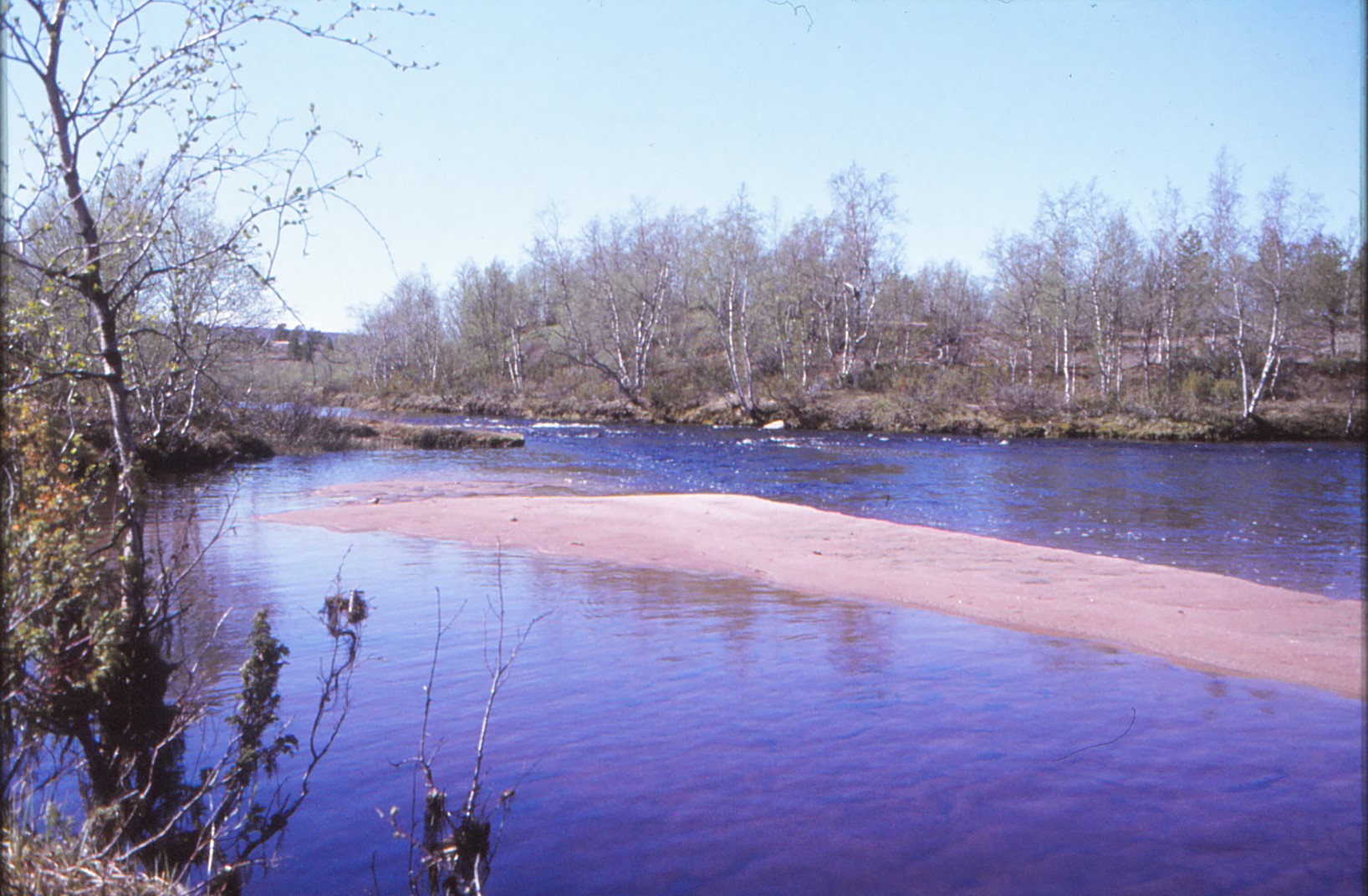 ax breaks or bonus funds to communities and companies, which increase their energy use without fossil fuels. This could be done without increasing the money based on energy production, as the funds could be taken from subsidies to fossil fuels, which can currently be estimated to be more than 500 billion € or $ per year worldwide.
ax breaks or bonus funds to communities and companies, which increase their energy use without fossil fuels. This could be done without increasing the money based on energy production, as the funds could be taken from subsidies to fossil fuels, which can currently be estimated to be more than 500 billion € or $ per year worldwide.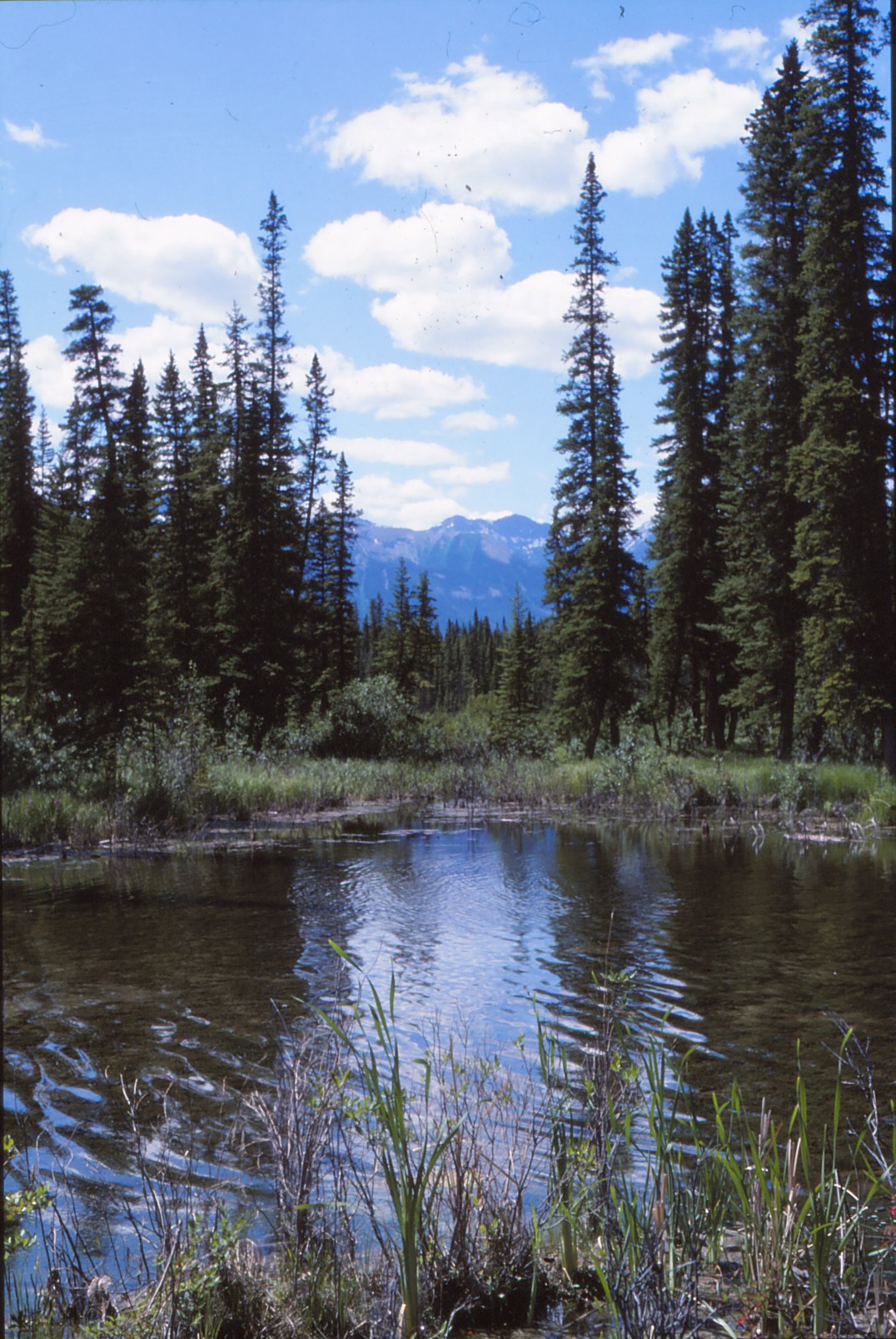 approach is doomed to fail. A common claim by populist is that: “We do what is required, but those others don’t.” And in the case of small countries like Finland, Sweden and Norway that: “Our contribution to global contamination is so small that even if we stopped all our emissions, it would change the global emissions much below 1 %.” Again, the statement that European industry is cleaner than, e.g., Indian, is true, but the populist buys Indian products, because they are much cheaper than the products made in European countries. Thus, if the populist nationalist was consequent, he would spend money to make the environmental standards of factories in Asia to conform to European standards or require that production, which has been moved away, is brought back, and thereafter only buy the domestic, more expensive products. Since neither is likely to happen, populistic nationalist fails gravely in climate issues. Notably, adopting children from poor areas would be both a climate deed and an action decreasing global inequality while increasing the number of people in countries with low reproduction rate.
approach is doomed to fail. A common claim by populist is that: “We do what is required, but those others don’t.” And in the case of small countries like Finland, Sweden and Norway that: “Our contribution to global contamination is so small that even if we stopped all our emissions, it would change the global emissions much below 1 %.” Again, the statement that European industry is cleaner than, e.g., Indian, is true, but the populist buys Indian products, because they are much cheaper than the products made in European countries. Thus, if the populist nationalist was consequent, he would spend money to make the environmental standards of factories in Asia to conform to European standards or require that production, which has been moved away, is brought back, and thereafter only buy the domestic, more expensive products. Since neither is likely to happen, populistic nationalist fails gravely in climate issues. Notably, adopting children from poor areas would be both a climate deed and an action decreasing global inequality while increasing the number of people in countries with low reproduction rate.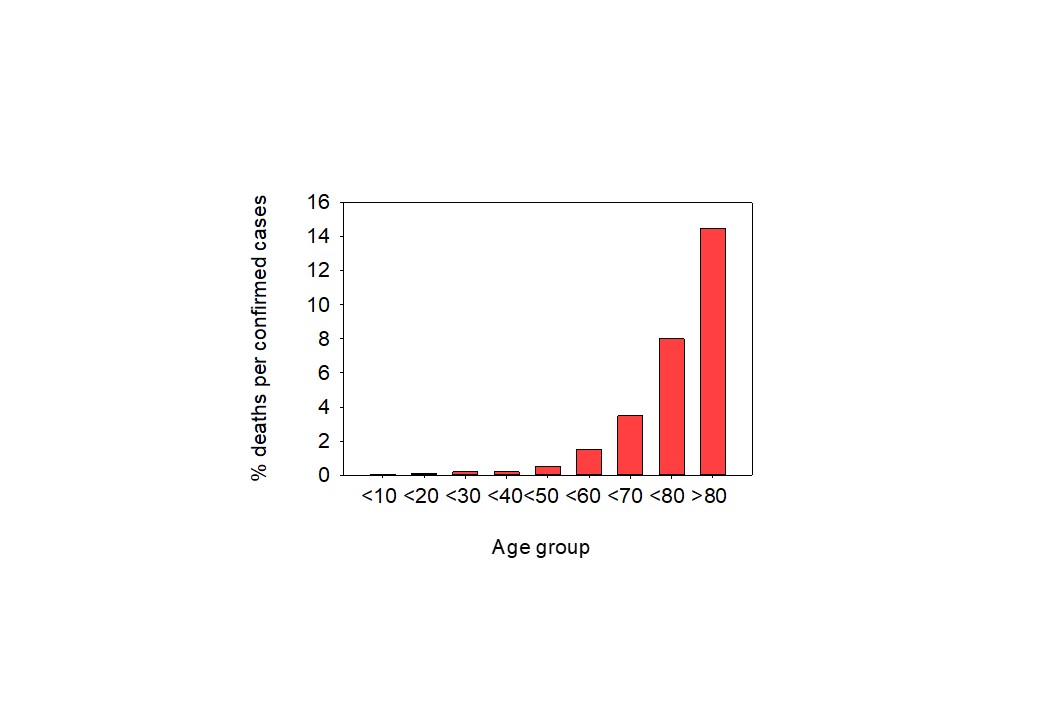 ly one has so far died. With the decrease of energy use in China because of the reduced production, the decreased air pollution can be seen even in satellite pictures. This means that probably the death toll caused by air pollution in China has decreased at least as much as it has increased as a result of coronavirus infections. Further, the climate effect of Chinese energy production has decreased markedly in the last couple of months.
ly one has so far died. With the decrease of energy use in China because of the reduced production, the decreased air pollution can be seen even in satellite pictures. This means that probably the death toll caused by air pollution in China has decreased at least as much as it has increased as a result of coronavirus infections. Further, the climate effect of Chinese energy production has decreased markedly in the last couple of months.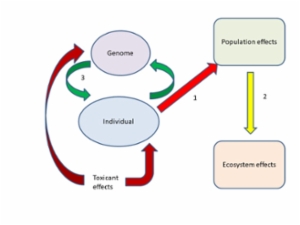 nmental biology and toxicology, and evolutionary biology as compared to ecology and genetics. My ecologist and geneticist friends always disagree with this, and give the following arguments. The ecologist says that many of the effects are indirect, which thus shows that only ecological studies can explain the effects. However, the effect may be indirect to the species (or group) one is studying, but there must be a functional effect on some organism in the ecosystem. If there weren’t, there would be no change. The geneticist and evolutionary biologist says that only the genetic changes will be transmitted to future generations. Thus, if an environmental change has an effect in the genome, that will be the important effect. While it is true that only genetically coded effect will be transmitted over many generations, a genetic change will only manifest itself if it affects the functions of organism in such a way that fitness (i.e. the number of offspring reaching sexual maturity) is affected. If the genetic change does not affect any functions, it is neutral both from the environmental and evolutionary viewpoint.
nmental biology and toxicology, and evolutionary biology as compared to ecology and genetics. My ecologist and geneticist friends always disagree with this, and give the following arguments. The ecologist says that many of the effects are indirect, which thus shows that only ecological studies can explain the effects. However, the effect may be indirect to the species (or group) one is studying, but there must be a functional effect on some organism in the ecosystem. If there weren’t, there would be no change. The geneticist and evolutionary biologist says that only the genetic changes will be transmitted to future generations. Thus, if an environmental change has an effect in the genome, that will be the important effect. While it is true that only genetically coded effect will be transmitted over many generations, a genetic change will only manifest itself if it affects the functions of organism in such a way that fitness (i.e. the number of offspring reaching sexual maturity) is affected. If the genetic change does not affect any functions, it is neutral both from the environmental and evolutionary viewpoint.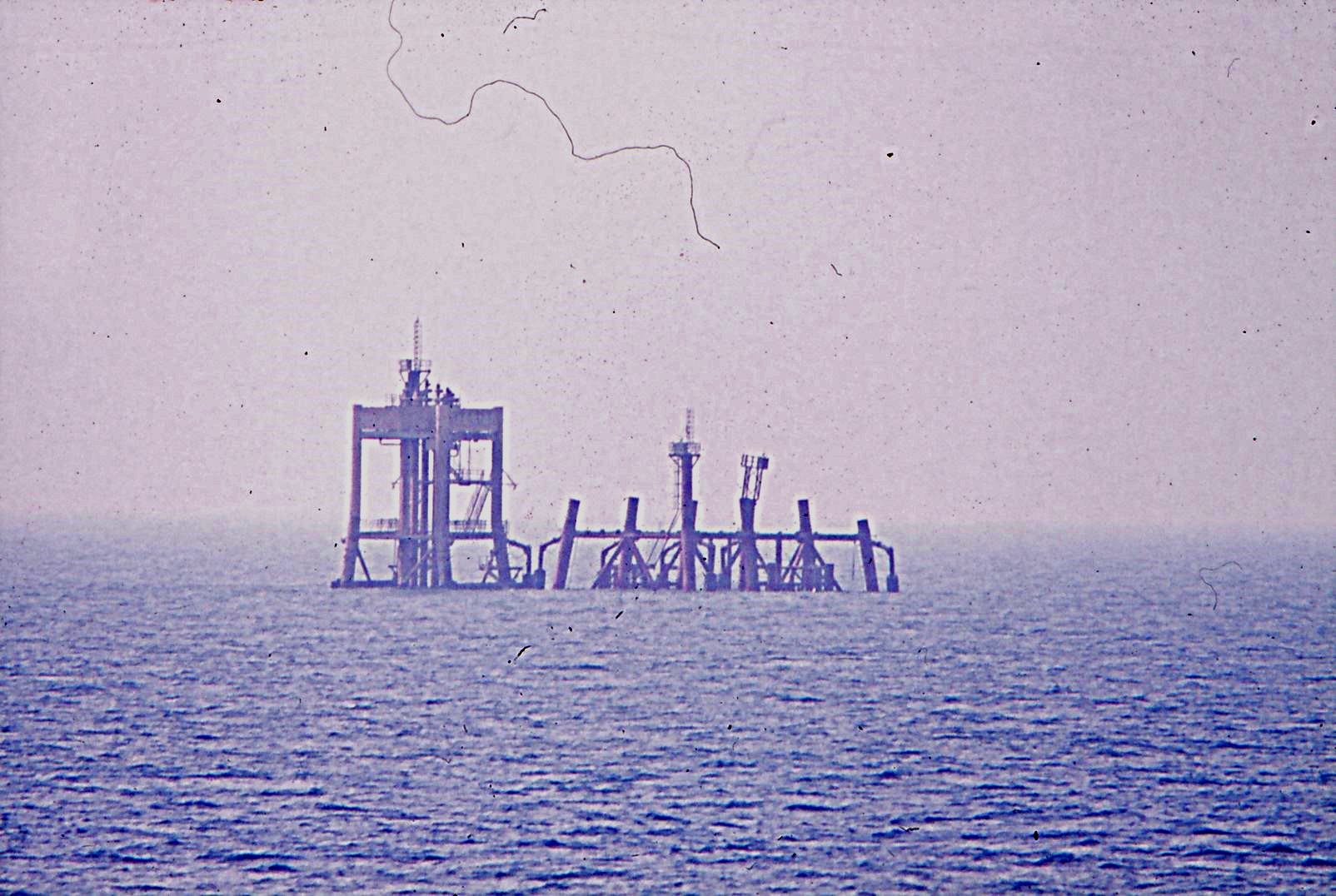
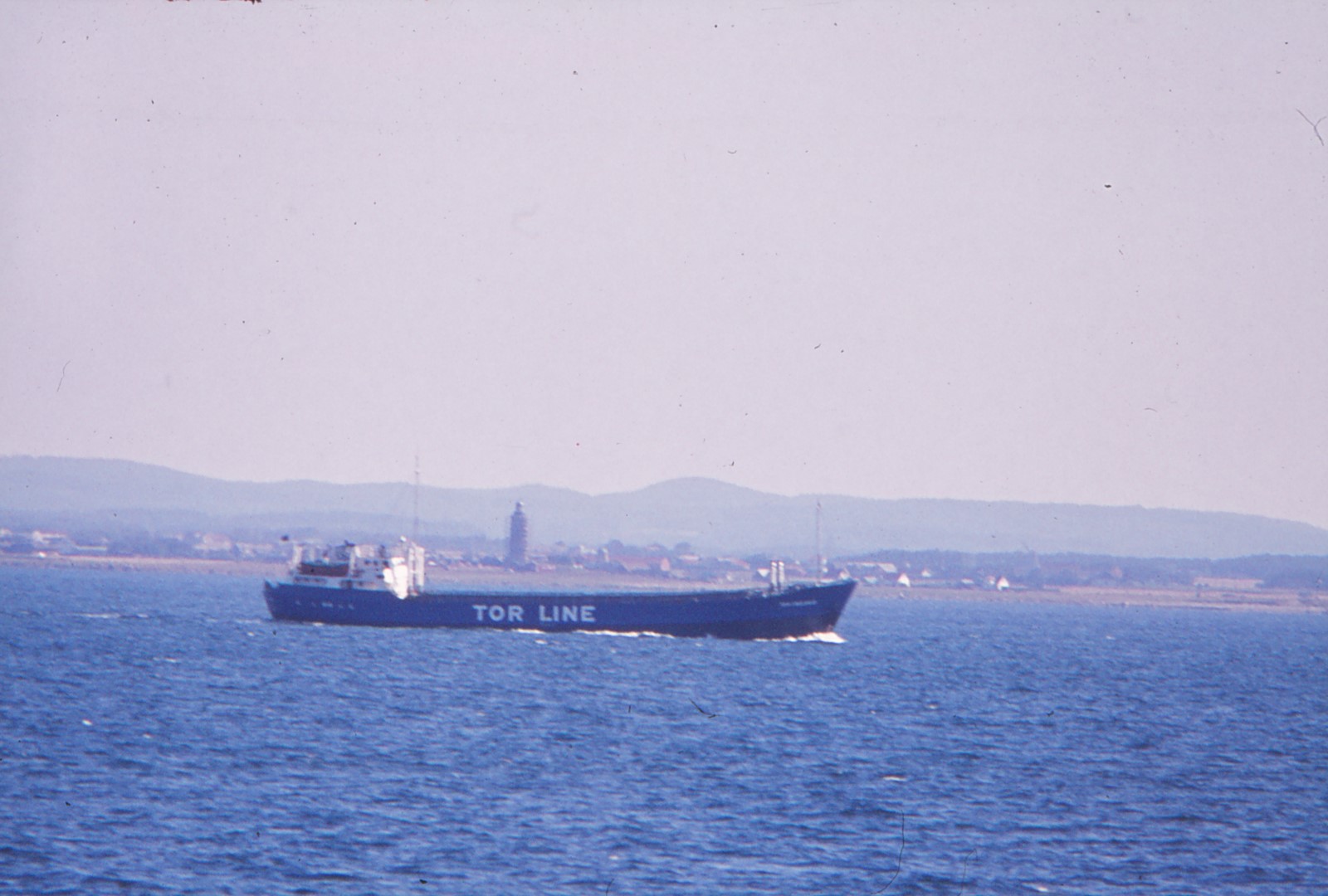 d North Sea, because of their heavy shipping, the Finnish shipping companies and industries were screaming that such an increase in the transport costs (low-sulphur fuel oil is more expensive than high-sulphur one or alternatively removing sulphur dioxide from fumes cost). However, the EU directive has been in effect a couple of years now, and has not resulted in serious economic disturbances (this incidence, to me, shows the hypocrisy of environmental thinking of many policy makers, as soon as any imagined expenses are increased because of environmental actions, they cannot be tolerated). The World Maritime Organisation is now putting an upper sulphur limit to all maritime heavy fuel oil. But in the long run, one should be able to go to oil-free shipping. Effective wind turbines are developed, and some ships using them may soon sail in the world’s seas. With the use of oil, there are several types of oil spills. Although the shipwrecks with pronounced oil leakage have decreased, most harmful spills are ones in small scale: washing empty oil tanks, using lubricating oils etc. It doesn’t help the seabird losing its insulation and dying of hypothermia knowing that the spill was small.
d North Sea, because of their heavy shipping, the Finnish shipping companies and industries were screaming that such an increase in the transport costs (low-sulphur fuel oil is more expensive than high-sulphur one or alternatively removing sulphur dioxide from fumes cost). However, the EU directive has been in effect a couple of years now, and has not resulted in serious economic disturbances (this incidence, to me, shows the hypocrisy of environmental thinking of many policy makers, as soon as any imagined expenses are increased because of environmental actions, they cannot be tolerated). The World Maritime Organisation is now putting an upper sulphur limit to all maritime heavy fuel oil. But in the long run, one should be able to go to oil-free shipping. Effective wind turbines are developed, and some ships using them may soon sail in the world’s seas. With the use of oil, there are several types of oil spills. Although the shipwrecks with pronounced oil leakage have decreased, most harmful spills are ones in small scale: washing empty oil tanks, using lubricating oils etc. It doesn’t help the seabird losing its insulation and dying of hypothermia knowing that the spill was small.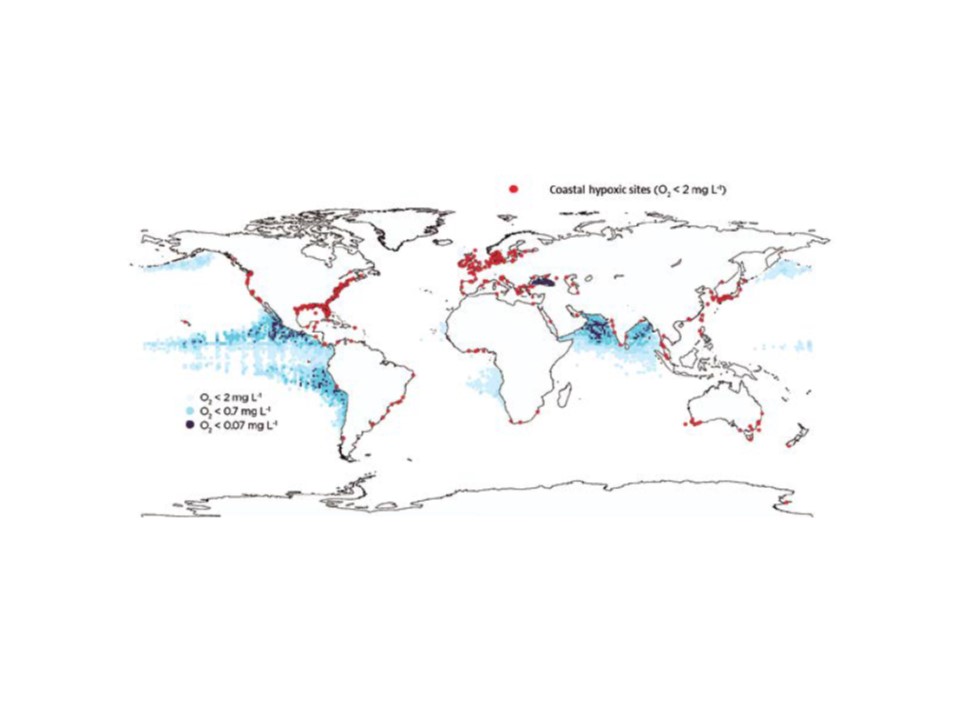
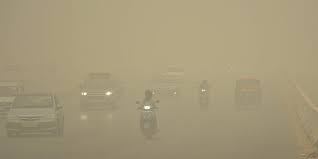 need for environmental actions because they disturb economy, Delhi in India is suffering from the worst smog ever, and it is estimated that the costs of the smog in India can be more than 100 billion €/year. Naturally, such costs do not disturb the economy, as any health costs are not paid by the companies involved in causing the problem, but by the health-care system. (One must admit, though, that in India much of the air pollution is caused by the lack of environmental legislation and largely caused by poor people burning anything to cook food and keep warm). This is overall a huge problem, companies all over the world can make profits without taking the environmental effects into account. A profound change should be made so that natural capital would be a part of any decision: if an economic action causes the deterioration of the environment, it should be financially compensated for.
need for environmental actions because they disturb economy, Delhi in India is suffering from the worst smog ever, and it is estimated that the costs of the smog in India can be more than 100 billion €/year. Naturally, such costs do not disturb the economy, as any health costs are not paid by the companies involved in causing the problem, but by the health-care system. (One must admit, though, that in India much of the air pollution is caused by the lack of environmental legislation and largely caused by poor people burning anything to cook food and keep warm). This is overall a huge problem, companies all over the world can make profits without taking the environmental effects into account. A profound change should be made so that natural capital would be a part of any decision: if an economic action causes the deterioration of the environment, it should be financially compensated for. Food security, water scarcity, rapid urbanization, mass migration, environmental pollution, biodiversity loss, and societal inequalities are all intricately woven into the tapestry of environmental change. These are wicked problems, intertwined and related to societal, economic, political, and behavioral dynamics and not simply physical systems.”
Food security, water scarcity, rapid urbanization, mass migration, environmental pollution, biodiversity loss, and societal inequalities are all intricately woven into the tapestry of environmental change. These are wicked problems, intertwined and related to societal, economic, political, and behavioral dynamics and not simply physical systems.” ws is that there are technological and societal solutions for stopping climate change without a need for drastic changes in everyday life – it only needs some adjustments. The worrisome problem is that there appears no sign of change in attitudes of economic leaders. In the recent report of World Economic Forum environmental questions were not even mentioned as factors to be taken into account, when considering economic development.
ws is that there are technological and societal solutions for stopping climate change without a need for drastic changes in everyday life – it only needs some adjustments. The worrisome problem is that there appears no sign of change in attitudes of economic leaders. In the recent report of World Economic Forum environmental questions were not even mentioned as factors to be taken into account, when considering economic development.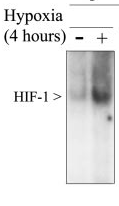 ersatile than that of mammals. We have studied the oxygen sensing and hypoxia-inducible factor (HIF) system, i.e. the phenomena now awarded Nobel Prize, since the late 1990’s. First, we observed that hypoxia-inducible factor was present in cells already in normal venous oxygen tension, although it increased in hypoxia (in humans and laboratory rodents it is only found in hypoxic conditions). Second, we observed that although the hypoxia-inducible factor level was controlled posttranscriptionally, also gene transcription could be modified. The HIF transcription depended on the number of hypoxic bouts experienced by the animal (in humans the control of HIF level occurs posttranscriptionally). Finally, we observed that HIF level was affected by temperature (something that is irrelevant for us homeotherms). These facts, together with the observations of interactions between HIF and circadian rhythms and environmental pollutants show that the system given the Nobel Prize for is more versatile in poikilothermic water breathers than humans.
ersatile than that of mammals. We have studied the oxygen sensing and hypoxia-inducible factor (HIF) system, i.e. the phenomena now awarded Nobel Prize, since the late 1990’s. First, we observed that hypoxia-inducible factor was present in cells already in normal venous oxygen tension, although it increased in hypoxia (in humans and laboratory rodents it is only found in hypoxic conditions). Second, we observed that although the hypoxia-inducible factor level was controlled posttranscriptionally, also gene transcription could be modified. The HIF transcription depended on the number of hypoxic bouts experienced by the animal (in humans the control of HIF level occurs posttranscriptionally). Finally, we observed that HIF level was affected by temperature (something that is irrelevant for us homeotherms). These facts, together with the observations of interactions between HIF and circadian rhythms and environmental pollutants show that the system given the Nobel Prize for is more versatile in poikilothermic water breathers than humans. evade the tax by, e.g., investing in stock market. Further, since the tax would be global, companies could not evade it by transferring operations to low-tax nations. A question, which also has to be solved is how different nations would pay the global tax, since their involvement in the overall economy differs. The simplest solution, again taking into account the different wealth of nations, would be to have the contribution as gross national product divided by population. It would be imperative for nations to be required to contribute to the global tax fund, since they have very different roles in overall economy. Since a major environmental problem is that the world population has increased beyond what can be tolerated, the average number of children should somehow be taken into account. This could be done by including in the nation tax average number of children. The nation’s contribution would be increased, if the number of children exceeded the number calculated for a stable population. As no nation would be exempt from the nation-wide payment, this would ensure that the population contribution would be paid also by countries, where most of the inhabitants would be exempt from payment. GET would be collected by the United Nations: UN already has all the world’s nations included.
evade the tax by, e.g., investing in stock market. Further, since the tax would be global, companies could not evade it by transferring operations to low-tax nations. A question, which also has to be solved is how different nations would pay the global tax, since their involvement in the overall economy differs. The simplest solution, again taking into account the different wealth of nations, would be to have the contribution as gross national product divided by population. It would be imperative for nations to be required to contribute to the global tax fund, since they have very different roles in overall economy. Since a major environmental problem is that the world population has increased beyond what can be tolerated, the average number of children should somehow be taken into account. This could be done by including in the nation tax average number of children. The nation’s contribution would be increased, if the number of children exceeded the number calculated for a stable population. As no nation would be exempt from the nation-wide payment, this would ensure that the population contribution would be paid also by countries, where most of the inhabitants would be exempt from payment. GET would be collected by the United Nations: UN already has all the world’s nations included.